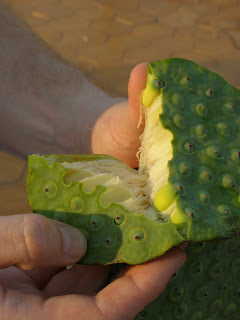An aquatic plant with a showy blossom which comes in pinks, pale blue and white and is just as stunning as a bud as it when when it opens flat. According to sacred scripture it can have more than a hundred petals.
Spiritually the lotus is an important plant to Buddhists, Hindus (it is the national flower of India) and the ancient Egyptians. According to one creation myth it was a giant lotus which first rose out of the watery chaos, an infinate ocean of water called Nun, at the beginning of time. The lotus blossom opened and out stepped the sun god, Atum, as a child (some versions say it was in fact Ra) to create the first day. He returns to the lotus each evening and as the lotus blossom closes for the night he disappears.
Creating a similar image in both Buddhism and Hinduism the lotus regularly appears as a symbol of purity, peace, enlightenment, beauty, rebirth, transcendence and fertility and is considered to be of divine origin. Buddha was said to sleep on a lotus six months of the year, and Shambala- Buddhist heaven- is sometimes protrayed as a field of sacred lotus blossoms.
The idea of the symbolic connection to enlightenment is, I think, a beautiful metaphor. The lotus begins its life humbly in the mud and grows through the sometimes turbulent, often dirty and occasionally deep water (representing the trials of life) to the warmth and light of the sun where it can show its beautiful delicate face and bask in the warmth. Lotus flowers ‘wake up’ (open) at dawn and go to sleep (close) in the afternoon, at about the same time I have my natural low ebb. Some lotuses have even been known to open up at night and close during the day, ignoring the normal sunlight hours favoured by the majority of flowering plants, and effectively transcending normal time cycles.
For Hindus it is from an opening lotus bud that emerged from the navel of a slumbering Vishnu, the preserver of life, long ago, at the end of the aeons, when the whole universe had been engulfed in an ocean, and Creation was all but lost. From the flower came an egg which held a sleeping Brahma, the creator of all, who as he stirred nudged the creation of new worlds and gods and life could begin again.
A bunch of three pods laced together with dried grass cost J 3000 riel (about 75 cents).
Pull the pod apart to reveal the pale green seed.
Peel the soft thick skin off each seed and eat. They taste a lot like sun warmed fresh peas straight off the vine.
It didn't take long before we were surrounded by some of the little kids who seemed more intent on playing yesterday than they did begging, their usual evening occupation. 'Just one, just one' they giggled. The little one opposite me kept coming back for 'one more, one more'. She even said thank you.
We shared a pod then gave the other two away to two other little boys who were sitting watching the boats on the water.
Apparently lotus seeds are good for chronic diarrhea not a bad thing to know in these parts!















7 comments:
Sounds very interesting...I had no idea one could eat them. Lol, on the last tip...yes, always helpful.
We used to eat this in Malaysia too but I never realized there was so much meaning to it. Interesting!
wow ... never knew half of that!!
thanx so much for sharing!
(。◕‿◕。)
What a lovely post! Facinating! We fell in love with the lotus on our trip to Thailand but I had no idea they had an edible portion. And LOOK! There's that elusive creature...YOU!!! Hullo. Nice to have a face to go with the fabulous writing. :)
What a fascinating, beautiful post. I never knew the significance of the lotus before and now I am feeling enlightened! I shall never look at a lotus in the same way ever again! Nor did I know they were edible! Thank you :)
Wondering where you are. Hope all is well.
Dear Tanya
My name is Joe Pinzone and I'm casting an international travel show about expats moving abroad. We'd love to film in Cambodia and wanted to know if you could help us find expats who have moved there within the last 15 months or have been there for 3-4 years, but recently moved into a new home. The show documents their move to a new country and will place the country in fabulous light. The contributors on the show would also receive monetary compensation if they are filmed. If you'd like more information, please give me a call at 212-231-7716 or skype me at joefromnyc. You can also email me at joepinzone@leopardusa.com. Looking forward to hearing from you.
Joe Pinzone
Casting Producer
P: 212-231-7716
Skype: Joefromnyc
Post a Comment